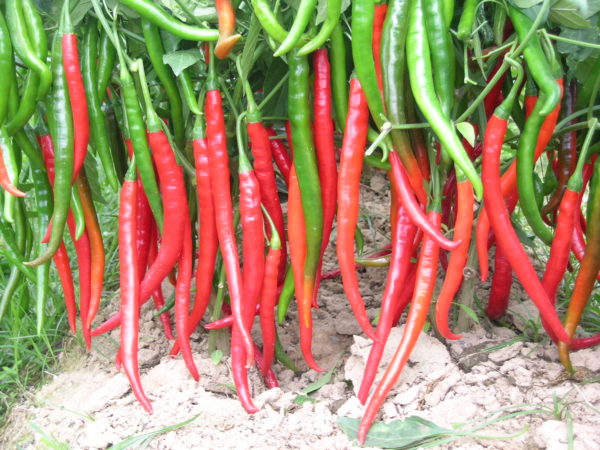
Varieties of long and thin pepper have long become popular due to their characteristics, descriptions, features, and a lot of positive reviews. Previously, it was difficult for domestic farmers to find unusual varieties of pepper that can develop well in different conditions, respond well to planting in the open ground.
Despite the widespread belief that peppers need special care, breeders managed to breed plants that need a little attention from the gardener to fully unlock the potential for abundant fruiting.
Content
Description and characteristics of long and thin pepper
Long and thin peppers are well represented by the mass of varieties. Some have been tested by time, others have appeared recently. Growing thin and long has become easier. If a particular variety of culture and require special conditions, the labor of the agrarian will pay off.
Unusual long and thin peppercorns are famous for their nutritional value:
- They are rich in sodium, carotene, vitamins B and C.
- This is an excellent source of potassium and iron, and the mass of other trace elements important for the human body.
- Not many people know, but this kind of pepper in terms of vitamin C content bypasses lemon and currants.
- A daily intake of 40 grams of pepper can work wonders for the immune system.
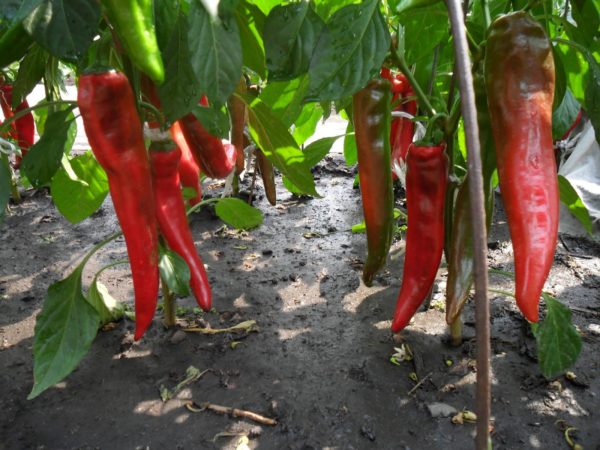
Early varieties of long and thin pepper
A group of early ripe varieties is able to please the gardener with ripe fruits after 100 days from the time of plant biting. These peppers include different types, some are more suitable for greenhouses, others are ideal for open ground, there are universal varieties. The best early grades are considered.
Cockatoo
A hybrid variety of pepper, which differs in the size of the fruit. One pepper can reach a length of 30 cm. But the average value remains 25 centimeters. The average weight is approximately 0.5 kg. Each fruit has an average wall thickness that rarely exceeds 6 mm. The name of the variety explains the shape of peppers. It resembles the cockatoo's beak. The stage of full maturity is characterized by a saturated red color. The fruits have a pleasant aroma and high meatiness, which makes Kakadu an excellent canning option. Bushes of hybrid pepper are large and powerful.
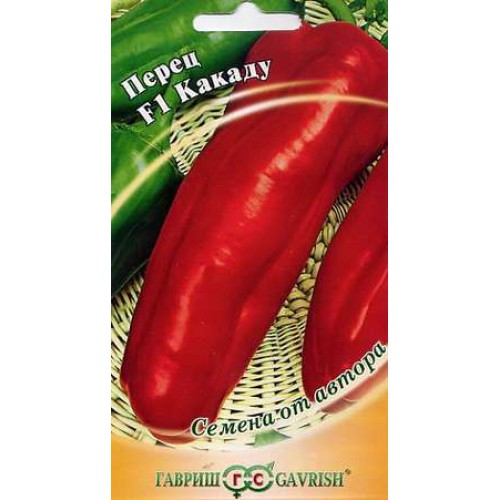
Sweet banana
Bushes are small, on average, reach an indicator of 65 centimeters. Compactness allows farmers to carry out a dense landing. The flowering period quickly passes into the period of formation and development of high-quality fruits. At first they have a yellow color, a light shade. By the time of the period of biological maturity, one can notice the manifestation of orange-red hues. For grade
Sweet banana is characterized by high quality peppers, an average length of 17 cm and great similarity in terms of shape with a banana. On average, one pepper has a weight of not more than 250 grams. The wall is thick, reaches 9 mm.The pulp has a characteristic juiciness, pleasant aroma and pronounced sweet notes. It is consumed fresh and recycled. A great candidate for canning. Important advantage
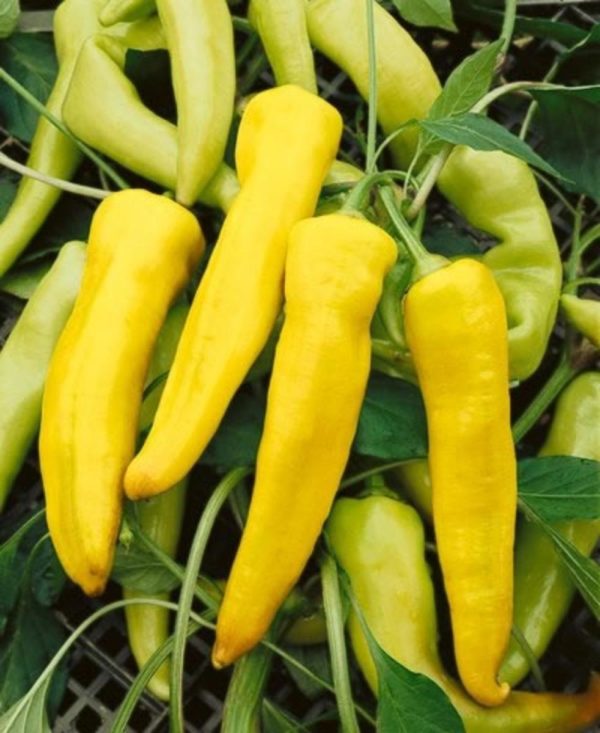
Marconi
Bushes of the pepper variety are powerful, reaching a meter in height, forming conical oblong peppercorns. The average length is approximately 22 cm. By weight, the fruits do not exceed the figure of 200 g. Walls of pepper are not thick, only 0.5 cm. Unripe Marconi are green, but after some time, the color changes to red. This variety is characterized not only by a wonderful taste, juiciness, ability, despite a thin wall, to tolerate transportation well.
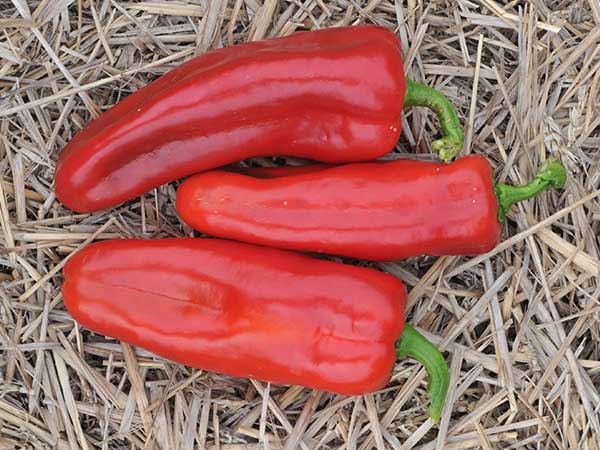
Orien
The bushes are compact, but often they can outgrow average values and reach 60 cm. Each plant forms peppers 24 centimeters in length. The diameter will be approximately 5 cm. In terms of weight, peppers are average about 140 grams. everyone. The wall of the fetus is of medium thickness, rarely exceeding 0.5 cm. At first, Orien will be light yellow, but over time it will turn a deep red. The taste is on top, the variety is used for different dining purposes, after heat treatment it remains dense and tasty.
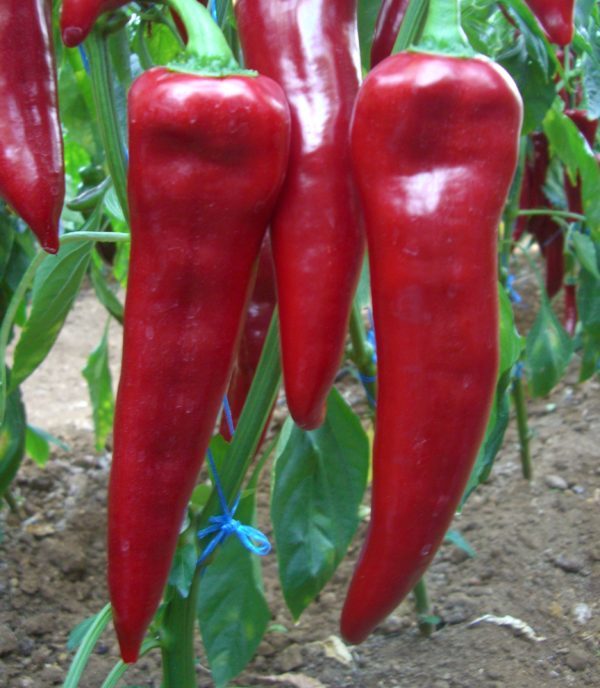
Middle grades of long and thin pepper
You can enjoy the first delicious fruits of medium early varieties after 120 days from the moment the culture is bite. Bright representatives of plants with an average growing season.
Shepherd
Plants reach a height of 50 centimeters, forming long fruits of about 20 cm. The weight of one will be approximately 300 grams. The wall is dense, reaches a centimeter in thickness. The form of the Shepherd is unusual, which attracts the attention of many farmers. The shape resembles a long cone with a sharp tip. This is characteristic of a few varieties of pepper. This species allows the fruits to achieve biological maturity becomes rich red.
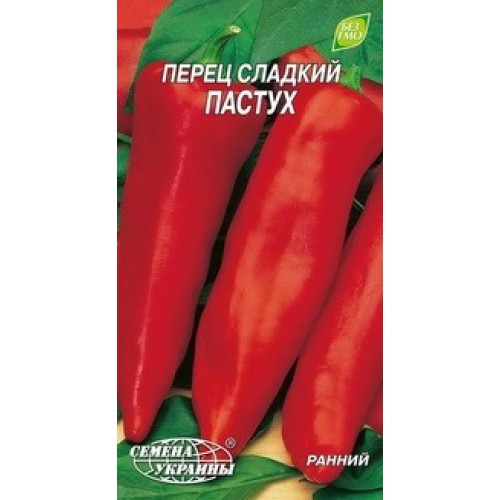
Red elephant
Powerful plants of this species are characterized by average spreading. The bushes reach a height of 90 cm in height. Each is decorated with elongated cone-shaped fruits with a red glossy sheen. Unripe peppers remain green until a period of biological maturity comes, which is characterized by a beautiful dark shade. The average length rarely exceeds 22 cm, the fruits are average in weight, 150 g each.
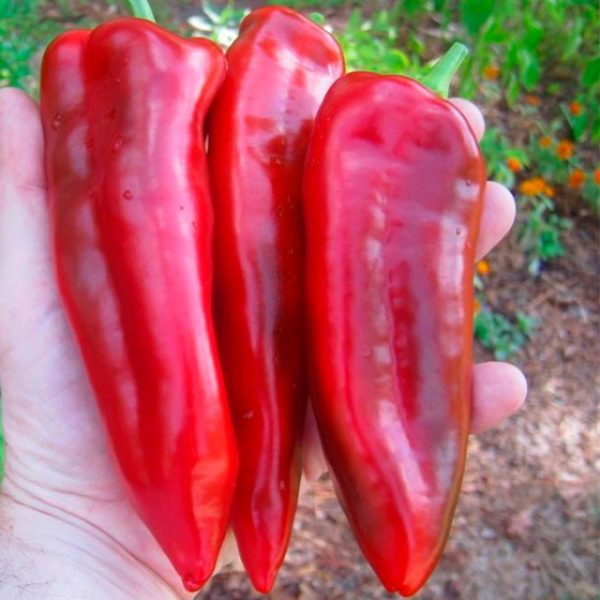
Sugar cone
Vigorous bushes remain powerful until the last days of “their life”. But their height rarely exceeds 60 cm. Nevertheless, this does not prevent the plant from forming many fruits of 18 cm and weighing 140-150 g. The density of the walls is average, not more than 0.6 cm. The shape is elongated, but resembling a cone, combined with ribbing, which makes the fruits interesting in appearance. Red color indicates biological maturity. But before that, the peppers retain a creamy shade for a long time. The fleshy flesh is hidden under a thin, smooth skin. Appreciate the Sugar Horn for its generous and prolonged fruiting.
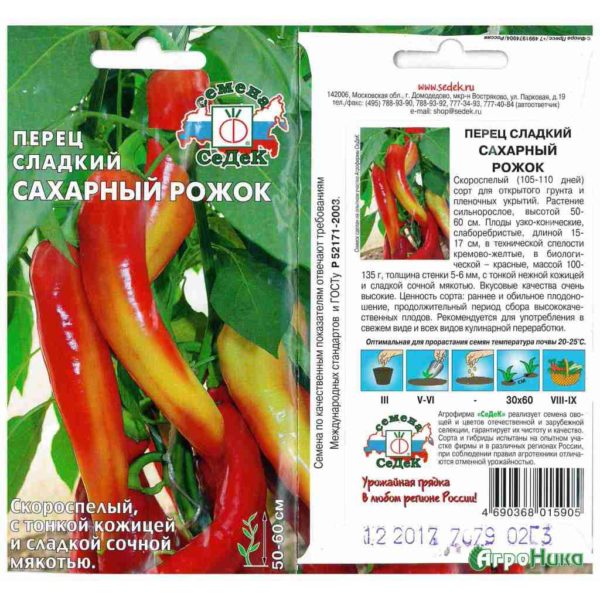
Hottabych F1
Hybrid variety. It grows quite easily up to one and a half meters in height. Quickly begins to form long trunk-like fruits, 100 g each. Peppers have walls with a thickness of 0.6 centimeters. Unripe peppers are pale green, but later turn yellow. A soft shade of yellow indicates biological maturity.
Hottabych is characterized by a pleasant sweet taste, which remains as saturated after prolonged storage. This variety rarely suffers from top rot and easily gives up to 7 kg of fruit per square meter occupied by this variety of culture to the farmer.
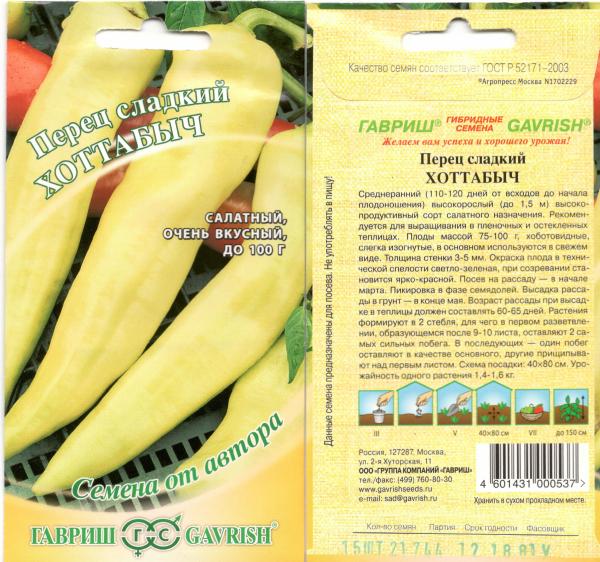
Late varieties of long and thin pepper
A great option for farmers who are comfortable picking fruits after 130 days from the time of pepper biting in the seedling stage. The best representatives of the late varieties.
Horn red
Bushes of pepper are spreading, about a meter in height, form oblong peppercorns of a cylindrical shape, topped with a sharp "tip" on the tip. One elongated fruit weighs 110–120 g. A characteristic rich red color speaks of biological maturity. The fruits are juicy, dense, with an incredibly pleasant smell. An attractive feature of the Horn remains resistance to a number of pathogens of dangerous cultural diseases.
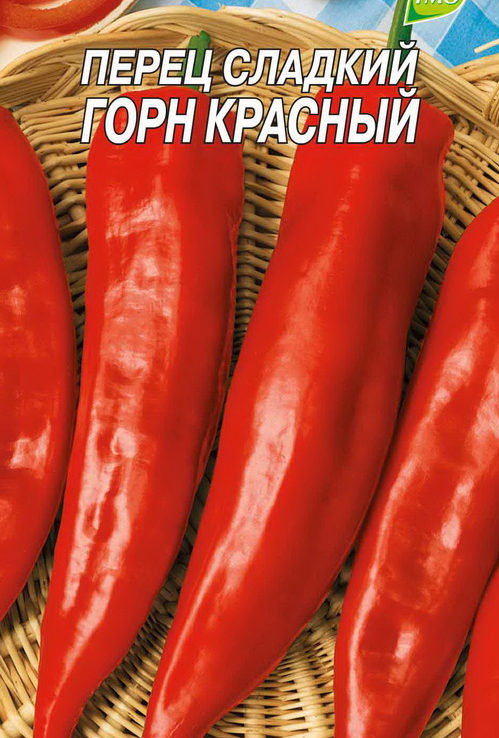
F1 mammoth tusks
A hybrid plant that manages to hit experienced farmers with the size of the fruit. Bushes reaching a meter in height are decorated with large peppers, in the amount of 12 pieces. The length of one is 28 cm, and the weight is 250-300 gr. Green color will change, turning into a beautiful shade of yellow, and then red. The taste of pepper is sweetish, the flesh is tender, but fleshy. You can safely preserve mammoth tusks, but it is better to choose the option of canning with slices. Fine salad variety, also suitable for snacks.
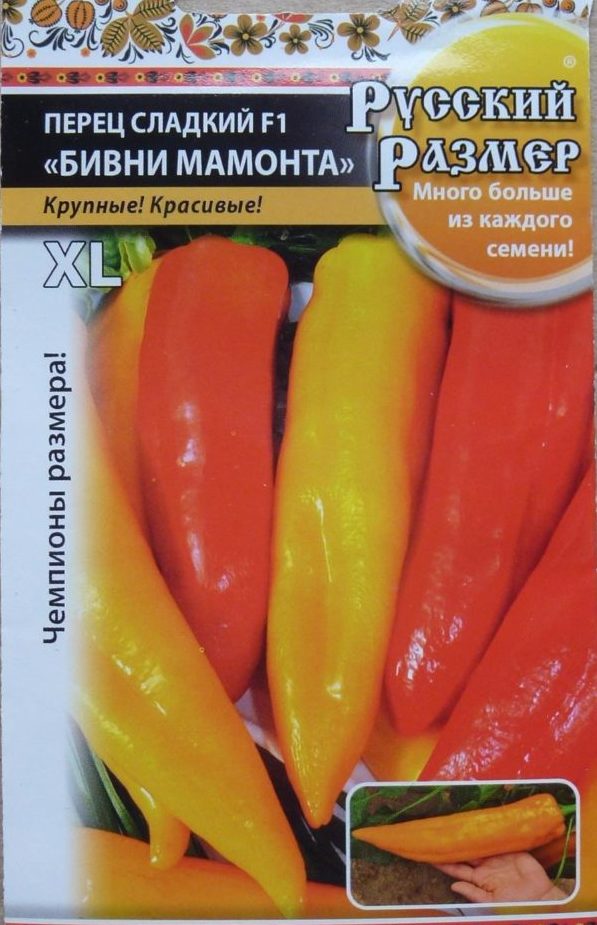
Python
This variety of culture is characterized by unusual sizes of not only fruits, but also bushes. Often the plant reaches a meter and a half in height. The number of leaves on it is average, the bush is semi-spreading. Python differs from many varieties in large fruit sizes of 27 cm, weight up to 80 grams. The walls are loose, only 0.3 centimeters. Python reminds gardeners of a number of other unusual peppers, but among them this variety stands out for its pleasant sweet taste and juicy pulp. Python is outwardly beautiful, red with a glossy sheen due to the smoothness of the surface of the fruit. At the stage of immaturity, peppercorns remain bright green.
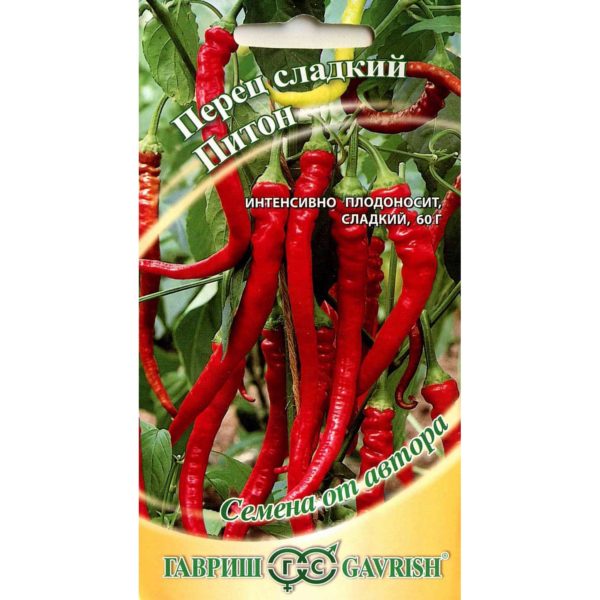
Productivity Reviews
Maksim:
“Not so long ago I began to grow Hottabych. This is the only pepper that grows so actively in my garden and is not subject to the development of diseases. I admire this plant. "
Olga:
“I especially like the Red Elephant, which always gives a lot of fruit, of equally high quality.”
Veronica:
“I like tall peppers. My favorite is Horn Red. Caring for it is not difficult, and the return on culture is always the maximum. ”
Gleb:
“Orien has never failed me in three years of cultivation. The bushes are small, but bear fruit with a bang. "
Vadim:
“I discovered the beautiful Shepherd variety last year. Among all the peppers that I had to deal with, this one is the most stable and brings a big harvest. ”
Anna:
“This year, for the first time, I planted a Sugar cone. There were signs of bacterial spotting, but the problem was quickly eliminated, after which pepper bushes continued to develop actively. ”




 Calorie pepper stuffed with meat and rice - BZHU per 100 grams
Calorie pepper stuffed with meat and rice - BZHU per 100 grams Gorky pepper - the best varieties for open ground
Gorky pepper - the best varieties for open ground Hot pepper seeds - the best varieties for open ground and reviews
Hot pepper seeds - the best varieties for open ground and reviews Capsicum tincture for hair - how to use and reviews
Capsicum tincture for hair - how to use and reviews